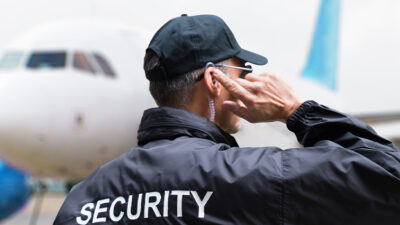Automation and Upset Recovery

With ongoing advances in aircraft automation, current and future pilots are becoming well versed in all aspects of technology on board modern aircraft. However, they may be lacking in certain aspects of airmanship and piloting technique as it relates to the correct and proper control of flight paths. When confronted with an unexpected upset, pursuing autoflight solutions when manual control is called for could potentially lead to negative outcomes.
Much has been written of late on pilots’ overdependence on automation. This is due in part to a few notable incidents where the pilot has improperly used autoflight systems or attempted to manage a fully automated airplane when manual pilot control was the correct course of action. While these events underscore that the problem is acute and current, regulators have been concerned about the issue for some time. The British Civil Aviation Authority published a report nearly 10 years ago concluding that current pilot training does not adequately prepare pilots to monitor the automated functions of the aircraft or teach pilots when to intervene. They recommended that there be a shift in emphasis in the way automation management is taught. The regulatory standards and methods for evaluating the appropriate knowledge required for the use of automation are significantly less well defined than those involved with verifying manual flying skills. The U.S. Federal Aviation Administration (FAA) recently published similar guidance on proper use of automation and pilot training interventions to address training short falls.
The need to better manage automation is illustrated in the published findings of an investigation into a 2012 Norwegian accident involving a Boeing 737. The aircraft was on approach and being flown fully automated. The pilots were unaware of a failure in the elevator hydraulic system and that the trim was running to compensate. Suddenly, the aircraft pitched nose up. The auto-thrust system initiated full power in an effort to maintain airspeed. The increase in thrust from the low-mounted engines further increased the pitch rate causing an even greater decrease in airspeed. When the pitch attitude reached 20 degrees nose-up, both pilots started pushing on the control column with a combined force in excess of 200 lbs in an attempt to recover. The pitch attitude eventually increased to nearly 40 degrees and the airspeed dropped below 120KIAS, the 1g stall speed. The stick shaker and stall warning actuated but fortunately, the aircraft did not stall because the wing was (properly) unloaded during recovery. The aircraft eventually landed safely. The board concluded that a buildup of deicing fluid caused the actuators to stick. Of particular note is that during the initial phase of the upset, no attempt was made to disengage the autopilot, auto-thrust system, or to trim nose-down manually. Additionally, the stick force applied didn’t cause the autopilot to automatically disconnect.
The above incident illustrates the difficulty pilots have in dealing with upsets when automation is involved. Ten years of FAA/NASA sponsored research into loss-of-control prevention and recovery has demonstrated that pilots tend to let the automation deal with an upset condition longer than they should. This may be due in part because they do not have a clear idea on a proper intervention.
All pilots have received in-flight unusual attitude recovery training sometime in their career. However, unless they have been trained in an in-flight simulation aircraft, none have accomplished real-world upset recovery. To ensure necessary proficiency in proper upset, recovery pilots must be trained to not only recover from extreme attitudes but also to understand transport aircraft aerodynamics, how various events might lead to an upset condition, and finally, how to adopt the necessary control strategy to sustain or regain controlled flight.

Calspan Aerospace has been providing research and testing services in the aviation and transportation industries for over 70 years. Calspan’s Advanced Maneuvering & Upset Recovery Training (AM-URT) program provides the most genuine and technically advanced upset training experience available specifically designed for commercial jet pilots. Their curriculum is derived from real-world aviation accidents presented in a completely safe airborne simulation environment. Calspan’s training methods are based on 14 years of government and industry sponsored research and focus on the most effective upset recovery techniques. The training includes classroom instruction and in-flight training in unique Learjet In-Flight Simulators.
http://www.calspan.com/
© 2025 Calspan Aerospace. All Rights Reserved.
Next ArticleRelated Posts

Emerging Security Threats in Business Aviation: Activism and Down-Route Risks
Security incidents affecting business aviation do not need to involve violence to have an operational impact. A protest delaying crew movements, blocking access to a hangar or resulting in an unauthorized photograph of a sensitive client can all trigger reputational, financial or compliance concerns for operators.

Little Things Matter: The Lost Key of the Titanic
Ultimately, the story of the Titanic’s lost key is a call to action for aviation professionals. It underscores the need for unwavering attention to detail, robust systems to catch human error and a culture that prioritizes safety over haste.

